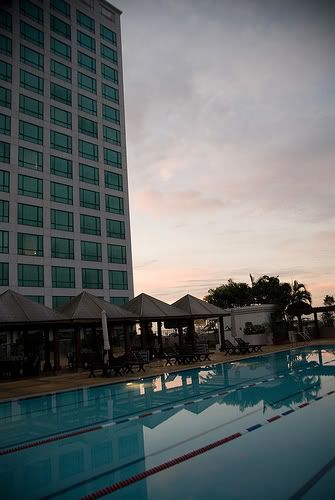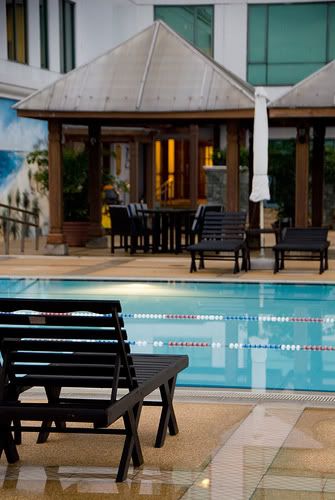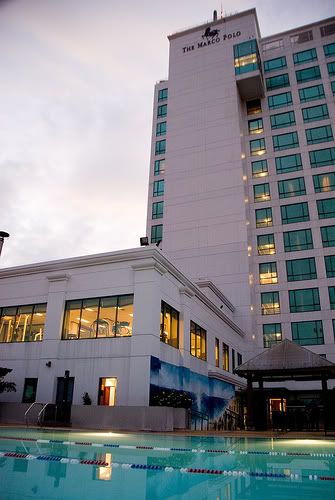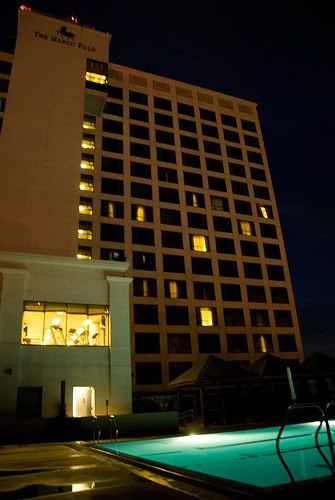nice man d i ng humbertos.....how much man ang fare bro going to davao?
Results 191 to 200 of 533
-
08-29-2006, 05:52 AM #191
 Re: CEBU and DAVAO, hand in hand for a stronger Philippines!
Re: CEBU and DAVAO, hand in hand for a stronger Philippines!
-
08-29-2006, 02:31 PM #192Senior Member

- Join Date
- Jun 2006
- Posts
- 519
 Re: CEBU and DAVAO, hand in hand for a stronger Philippines!
Re: CEBU and DAVAO, hand in hand for a stronger Philippines!
this just came in.....OH MY GOD....Cebu's going very fast.....grabe na 'to!
originally posted by @Hansboy.....
Bigfoot Media Park (The 3 Towers) @ Cebu Business Park


Tower 1 is 42 storey | Tower 2 is 38 storey | Tower 3 is 36 storey
STATUS is ON HOLD until the funding reach the required expenses!
-
08-29-2006, 09:57 PM #193Junior Member

- Join Date
- Aug 2005
- Posts
- 453
 Re: CEBU and DAVAO, hand in hand for a stronger Philippines!
Re: CEBU and DAVAO, hand in hand for a stronger Philippines!
have u seen the original design? it looked like the unionbank tower in Ortigas...it was taller than these new designs..however, i prefer to see three scrapers in the business park..than one! ehehehehehh way to go Bigfoot!
OT- Markiiboi, arnoldsa,slerz, and i (from ssc) met mike gleisner, owner of bigfoot when we visited his facility. now i really believe na real millionaires are really down to earth! coool!
-
08-30-2006, 02:01 AM #194C.I.A.

- Join Date
- Mar 2005
- Posts
- 1,679
 Re: CEBU and DAVAO, hand in hand for a stronger Philippines!
Re: CEBU and DAVAO, hand in hand for a stronger Philippines!
wow, grabe ha...the three bigfoot towers look so grand.

-
08-30-2006, 02:22 AM #195Senior Member

- Join Date
- Jun 2006
- Posts
- 519
 Re: CEBU and DAVAO, hand in hand for a stronger Philippines!
Re: CEBU and DAVAO, hand in hand for a stronger Philippines!
R7 investments grow as 720 new firms open
Investments in Central Visayas continue to grow in the first half of the year, the Department of Trade and Industry (DTI) 7 reported.
The DTI 7 said the growth is reflected in the 10.3 percent increase in the number of business establishments registered between January and June this year over that of 2005.
In the first half of this year, the DTI 7 reported 7,662 registered business establishments, up by 720 over last yearâs 6,942.
Data from the Securities and Exchange Commission (SEC), which was gathered by DTI 7 Information Network Center, showed that investments poured in by corporations and partnerships also increased this year compared to 2005.
The amount of paid-up capital of corporations grew to P2.21 billion during the period, an 11-percent increase from last yearâs P2.1 billion.
The total capital of business partnerships grew by 36 percent for the first six months of the year or P35.95 million, compared to P26.53 million for the same period in 2005.
The number of registered corporations and partnerships in the region also grew, according to DTI 7.
SEC registered corporations from January to June increased to 462, a 6.45-percent growth compared to 434 for the same period in 2005.
The number of partnerships that registered with SEC increased to 83 from 76 last year, a growth of 9.21 percent.
Investments in economic zones in the region under the Philippine Export Zone Administration grew 40.43 percent in the first half of the year to P3.13 billion from P2.26 billion in 2005.
However, there was a sharp decrease in investments registered with the Bureau of Investments to P129.51 million in the first half of the year from P509.6 million in the same period last year.
According to the DTI 7 data, the total number of firms and employees in economic zones increased.
The number of firms in the zones increased to 185, 1.13 percent more compared to 177 for the same period this year. The total number of employees grew to 85,185 against 82,883 in 2005.
The data showed that the number of workers at the Cebu Light Industrial Park in Lapu-Lapu City rose by 31.54 percent from January to June this year to 392 compared to 298 in the same period last year.
The total number of employees at the Asiatown IT Park in Cebu City more than doubled in the period to 2,384 from 1,424 in the same period in 2005.
Apart from several call centers like E-telecare, PeopleSupport and Qualfone, several software development companies such as, NEC Telecom Software Philippines, Epson, Tsuneishi Technical Services, NCR-Cebu Development Center and Versagrafix are also located at Asiatown IT
-
08-30-2006, 02:26 AM #196Senior Member

- Join Date
- Jun 2006
- Posts
- 519
 Re: CEBU and DAVAO, hand in hand for a stronger Philippines!
Re: CEBU and DAVAO, hand in hand for a stronger Philippines!
ICT HR Survey on Cebu Research Report
by: Janette Toral
Cebu is the country's next hotspot destination after Metro Manila for investment and outsourcing opportunities.
The ICT HR Survey on Cebu Research Report, prepared by CEDFIT (Cebu Educational Development Foundation in Information Technology), highlights the advantages and challenges that Cebu has to dealt with and why it has what it takes to be the Philippines' Software & E-Services Hub in five to seven years time.
250 respondents from the academe and 261 from the industry were surveyed to come up with this report.
Some of the report highlights are:
Despite the Philippines being packaged as a call center and business process outsourcing destination, Cebu is seen to become the country's premiere software development and e-services hub. Software development is considerd to be the primary core strength.
Despite the slump in IT enrollment in most part of the country, as more switch to nursing. Cebu's IT graduates base remains stable and expects around 2200 IT graduates this year.
100 to 300 IT graduates actually get employed in the software development per year. Those who don't qualify end up meeting the manpower needs of the other e-services sector.
It is expected that the number of IT graduates needed in Cebu will reach up to 30,000 graduates in the next 5 to 7 years to cope up with growth and demand.
Why is the ICT HR Survey on Cebu right for you?
Provides a comprehensive baseline understanding of IT HR supply potentials of Cebu
Established a Cebu-specific profile to reflect industry trends vis-Ã*-vis existing local capabilities
Showed gaps between industry demand and academe supply
Shows industry directions toward closing the gaps
Who can benefit from the ICT HR Survey on Cebu?
The report is essential to anyone eyeing Cebu as a potential investment and/or outsourcing destination.
The ICT HR Survey on Cebu covers the following and more:
Number of IT graduates in Cebu per course
IT employment in Cebu
Reasons for oversupply and underemployement
Number and quality of IT graduates needed by the industry each year
Perceived advantages of Cebu as an IT hub
Action programs to further strengthen Cebu's competitive advantage
-
08-31-2006, 12:46 AM #197Senior Member

- Join Date
- Jun 2006
- Posts
- 519
 Re: CEBU and DAVAO, hand in hand for a stronger Philippines!
Re: CEBU and DAVAO, hand in hand for a stronger Philippines!
Filinvest eyes 2010 for Seascapesâ completion
By CAI U. ORDINARIO
The Manila Times Researcher
Property developer Filinvest Development Corp. expects its major leisure project, Seascapes, to be completed by 2010, with its clubhouse ready by the first quarter of 2007.
Seascapes is the Gotianun family-controlled companyâs 12-hectare project in Cebu and is considered the companyâs second-biggest project after its Tagaytay venture, which sits on a 60-hectare lot. Previously called Semanea, the Cebu project was subsequently renamed to Seascapes to better suit market tastes.
Lennie A. Mendoza, vice president of Filinvestâs Leisure Unit Business Development, said the project would cost more than P2 billion spread over five years of development. The company plans to use internally generated and some borrowing to finance the project.
A high-end seaside resort community, the project has 69 lots available for possible clients. "Itâs highly pedestrianized, its ideal for pedestrians. [Clients will be] living in a resort community," Mendoza said.
Seascapes would mostly be composed of midrise condominium units to be marketed as retirement homes, or secondary homes, or vacation houses. The project would also have villas and casitas near the beach club.
"Itâs a combination of a first home, second home and/or retirement homes," Mendoza said, adding the site is only 15 minutes away from the airport.
The resort community would also have a spa, a restaurant, badminton courts, gym and water-sports facilities. Mendoza said Filinvest has begun clearing the access road leading to the resort and expects its marketing office to be up and running by year-end.
Previously, subsidiary Filinvest Land Inc. launched a residential and business village dubbed as Asenso Village in Calamba, Laguna, and General Trias, Cavite.
The company is allotting P300 million for the 30-hectare project in a span of two to three years. Each property runs to about 15 hectares, and each phase about five hectares.
Joseph M. Yap, Filinvest Land president, said the company was inspired by the experience of the Gotianun family when it moved to Manila from Cebu. In order to start a business, the family had to utilize the lower part of the home as office space.
The residential/business units of Asenso Village will have the same design. Yap said that with this concept, businessmen would also have time for their families.
-
08-31-2006, 12:29 PM #198Junior Member

- Join Date
- Aug 2005
- Posts
- 453
 Re: CEBU and DAVAO, hand in hand for a stronger Philippines!
Re: CEBU and DAVAO, hand in hand for a stronger Philippines!
Kudos to Cebu and Davao for working hard to have a stronger and better Philippines!
Davao: Still the Most Financially Healthy City in VISMIN.
Is Davao City Financially Healthy?
http://www.mindanaotimes.com.ph/column.php?id=2082
YES. The Daily Inquirer and Bulletin August 23, 2006 issues contain the Commission of Audit 2005 Financial Reports of all provinces, cities, and municipalities. Numbers and statistics are boring but sometimes information squeezed from them are interesting. We have 116 cities.
The Top 10 in total income are: 1) Manila 2) Quezon 3) Makati 4) Pasig 5) Davao with P2,436,630,000) 6) Caloocan with P2,156,932,000 7) Cebu with P2,135,013,000 Mandaluyong with P1,601,647,000 9) Parañaque with P1,596,226,000 10) Pasay with P1,450,562,000. Only 7 of the 116 cities have income of 2 billion pesos or more.
Mandaluyong with P1,601,647,000 9) Parañaque with P1,596,226,000 10) Pasay with P1,450,562,000. Only 7 of the 116 cities have income of 2 billion pesos or more.
Of the 7, five are in Metro Manila, one in Visayas (Cebu #7) and one in Mindanao (Davao#5). City Treasurer, Rodrigo Riolaâs report shows that in 1995 we become the first in Mindanao to have an income of one billion pesos and in 2003 the first to have an income of 2 billion pesos (2003-P2,067,640,000; 2004 - P2,104,778,000).
In net income, Davao is no. 27 with P117,601,000 while Cebu is no. 11 with P511,073,000. Davaoâs area is 244,000 hectares so the income used to develop infrastructures (roads, bridges, canals, etc.) are stretched to the limit from Barrio Dalag which is adjacent to Magpet, Cotabato, Barrio Paradise near Sto. Tomas/Panabo, Davao del Norte to Malabog adjacent to Bukidnon and Carmen Cotabato, to Sibulan, near Sta. Cruz, Davao del Sur.
Cebuâs area is less than 50,000 hectares and is near the cities of Lapu-Lapu and Mandaue, so it need not spend much for infrastructure. Besides, Cebu has been the Visayas and Mindanaoâs business center for 300 years, so the commercial infrastructures (water lines, bridges, roads, telephones, electricity, ports) have been in place and well developed all these years.
Davaoâs P117,601,000 net income is number one in Region 11 but it is only no. 4 in Mindanao. Dadiangas is No. 1 with P164,642,000, Cagayan No. 2 with P151,534,000, Butuan No. 3 with P142,759,000. Our land area (224,000) is equal to combined land mass of Dadiangas, Cagayan and Butuan so our net income is less compared to the 3 cities because we have to spend more for services and infrastructures.
Of the 27 Mindanao cities, Zamboanga with P1,369,373,000 and Davao with P2,436,630,000 are the only cities with incomes of one billion pesos or more. Cagayan is no. 3 with P975,897,000 followed by Iligan with P868,680,000 and Dadiangas with P784,350,000.
Davao City is a young city. In the early 19th century, the Cagayan de Oro Diocese covered all Mindanao. Later, Zamboanga diocese was created and Davao was just one of itâs outposts until 1938 when we had our own diocese.
The Americans arrived in Davao in 1900 but couldnât find enough people with experience to run the government so much so that up to the 20âs and 30âs most of the city government offices (Mayor, Engineer, Health) were run by Zamboangueños Generoso, Alvarez, etc.)
In 1938, Zamboagueño Cesar Climaco was our City Secretary. Cagayan, Zamboanga, and Butuan already had municipal governments during the 18th century. They had a lead of more then 100 years so how did we overtake them? One is political will.
After the 1986 EDSA Revolution. Duterte became the Mayor for 5 terms (1987-93, 1993-95, 1995-98, De Guzman 1998-01, then Duterte, 2001-04, 2004-2007) Duterte and Manila Mayor Arsenio Lacsonâs charisma were the same. You could not be neutral about Lacson, you either like him or hate him and most Manileños liked him. This is also Duterteâs image. When he said obey the smoking rule, or⦠we did.
When he said no drugs or⦠Drugs became a comparatively minor problem although we have the biggest population (One million plus) and is the richest city in Mindanao. He knew what was needed to bring business to Davao. We were the first in Mindanao to have a City Comprehensive Development Plan Ordinance and a Modern City Zoning Ordinance (2002).
The two ordinances alone make investors understand that Davao know what it is doing to attract business. Two, Davao has a heart. We were the first in the nation to have a Womenâs Development Code and a Children Development Code. The Balay Dangupan is the first and only entity in the nation where minor girls who are victims of violence, rape, incest are housed for free while their cases are in Court.
Only Duterte have done this. Three, Mindanaoâs Senator Nene Pimentel single handedly exerted superhuman effort so that Local Government Units (Cities, Muncipalities, Provinces) will have financial autonomy through his law R.A. 7610. , all BIR tax payments in Davao are sent to Manila and Imperial Manila alone decides how much should be returned to us.
Today, by law, the Department of Budget Management specifies how much of the tax collections we collected and sent to Manila should be returned to us. This is why we are No. 5 nationwide in total income among the 116 cities.
Fourth, resiliency and resourcefulness. From 1980 to 1985, our city was known as Asiaâs killing field. Nobody went out after 8:00 p.m. and you could not find a uniformed policeman day or night.
Today, Davao City is the safest city in the nation. We have a dynamic mayor and we are working hard so that we can have a good life. When people complained about aerial spraying of banana and pineapple plantation in Toril and Calinan. He could have kept the city out of the controversy and/or he could have told the parties to stop their quarrel but he did not. He listens to those who have no or have very little voices in the corridors of power. Fifth, we have faith in the Lord.
We have more mosques than Cagayan and Dadiangas combined. We are Mindanaoâs center for Christian Missionaries and for Evangelization.
Foresight: He had talks with the provinces and cities along the Davao Gulf, to integrate development plans and coordinate development policies to attain common goals and objectives in the economic, social and environmental sectors.
Thus, in 2002, he signed the âSave Davao Gulf Programâ with other Coastal mayors and governors. There are plans for a Metropolitan Davao which will economically integrate the two rapidly developing municipalities (Panabo is a City) bordering the City, Panabo in the North and Sta. Cruz in the South.
A common dream is the development of a light rail transit system to provide fast and cheap means of mass transport for commuters between these municipalities thru the city. What are the present and future prevailing issues and Major Challenges Facing the City Leaders and Planners? 1.
The rapid and expanding urbanization and increase of commercial, agricultural and industrial establishments and activities which, if not properly controlled or directed, could spill over to protected or reserved land areas critically for the cityâs sustainable development.
(Dumoy, Aquifer, Watersheds, Farmlands). 2. Balancing the needs of business and protecting the environment and the health and safety of the people. Control over such development requires a strong political will since market forces, vested and political interest often dictates on the cityâs development. Fortunately, he does what he says and says what he does.
-
08-31-2006, 12:32 PM #199Junior Member

- Join Date
- Aug 2005
- Posts
- 453
 Re: CEBU and DAVAO, hand in hand for a stronger Philippines!
Marco Polo Hotel Davao
Re: CEBU and DAVAO, hand in hand for a stronger Philippines!
Marco Polo Hotel Davao









-
08-31-2006, 04:13 PM #200Senior Member

- Join Date
- Jun 2006
- Posts
- 519
 Re: CEBU and DAVAO, hand in hand for a stronger Philippines!
Re: CEBU and DAVAO, hand in hand for a stronger Philippines!
...i hope they will push through with this project including CEBU
**********************
Thursday, August 31, 2006
P10B needed to realize Negros-Panay bridge
By Danny B. Dangcalan
* If approved and funded, the project is expected to be completed in three to four years
AT LEAST P10 billion or P1 billion per kilometer is needed for the proposed Negros-Panay Translink Bridge said Negros Occidental Governor Joseph Marañon Wednesday.
That is, if his preferred alternative route, which is from Tomongtong Point in Negros' E.B. Magalona town to San Juan Point in Banate town, Panay island is carried.
The Tomongtong-Banate route has an actual distance of 15.5 kilometers. However, the government can cut on cost for at least 5.5 kilometers, thus reducing the budget to only P10 billion instead of the P15.5 billion.
Marañon said the 5.5-kilometer distance will not cost as much because these portions are shallow and would not need as much materials as those in the deeper portions.
The proposal was presented Wednesday during a special meeting of the Visayas governors held at the Negros Occidental Governor's Conference Hall.
"The project is expected to be completed in three to four years, and considering the magnitude of the budget, it would need foreign assistance," Marañon also said.
Meanwhile, Marañon is also set to ask Bohol Governor Erico Aumentado, president of the League of Provinces of the Philippines, to request the National Government for foreign funding or access to foreign loans at a concessional rate should the proposed bridge push through.
The Negros-Panay bridge is part of the proposed Cebu-Negros-Panay (CNP) bridge aimed at physically linking these three islands and boost its tourism, trade, commerce and investments. It is a part of the Trans-Visayas bridges, which will link the islands of Bohol, Mactan, Cebu, Leyte, Negros, Guimaras, and Panay.
All these are under the Trans-Visayas-Mindanao Highway/Waterway Linkage, generally known as the Strong Republic Nautical Highway (SRNH) of the Mega Region project of President Gloria Macapagal-Arroyo.
The SRNH, connecting the islands of Luzon, Mindoro, Panay, Negros, and Mindanao, has enhanced the public access to goods and services aside from creating new and bigger markets for inter-island trade and tourism activities, Marañon said.
He backed his claims by presenting a data, which showed that Leyte and Panay islands constitute more than 60 percent share of the total cargo by seaports.
Leyte ranks first in passenger traffic, Aklan, Iloilo, and Negros Occidental are the most visited places in Western Visayas, while Cebu enjoys the lead in the distribution of travelers in Central Visayas.
Meanwhile, the Department of Public Works and Highways, (DPWH) also presented a separate proposal to construct a bridge connecting Panay and Guimaras island, and another connecting Guimaras and Negros island, Marañon said.
The Negros-Guimaras bridge, however, would cost a bigger budget compared to the proposed Negros-Panay bridge.
This as Negros to Guimaras is about 22 kilometers in distance while the route from Tomongtong Point in E.B. Magalona to San Juan Point, Banate in Panay island is only 15.5 kilometers.
As construction cost estimates is pegged at P1 billion per kilometer, the Tomongtong-Banate route, which can be cut by 5.5 kilometers, can be reduced to only P10 billion, as against the P20 billion needed for the Negros-Guimaras bridge, Marañon said.
A more accurate estimate would be disclosed after a feasibility study shall have been conducted, he said.
Marañon said the Banate-Tomongtong option is cheaper because both Banate and Tomongtong are less than three kilometers away from the national roads and will thus be more accessible to commuters.
Farfetched
"The Negros-Panay bridge seems a farfetched goal, but we have to start it now. If not now, then when? And if not us, who else will?" Marañon queried.
As a result, nine out of the 16 Visayas governors that came to the meeting agreed with the proposed project Wednesday.
These include Governors Salvacion Zaldivar-Perez of Antique, JC Rahman Nava of Guimaras, Neil Tupaz of Iloilo, Marañon of Neg. Occ., Erico Aumentado of Bohol, Gwendolyn Garcia of Cebu, George Arnaiz of Negros Oriental, Orlando Fua Sr. of Siquijor and Rogelio Espina of Biliran.
Presidential Adviser for Western Visayas Rafael Coscolluela, Philippine International Trading Corporation Chairman and President Roberto Pagdaganan, and Armed Forces of the Philippines Chief Hermogenes Esperon were also present.
Advertisement
Similar Threads |
|






 Reply With Quote
Reply With Quote
